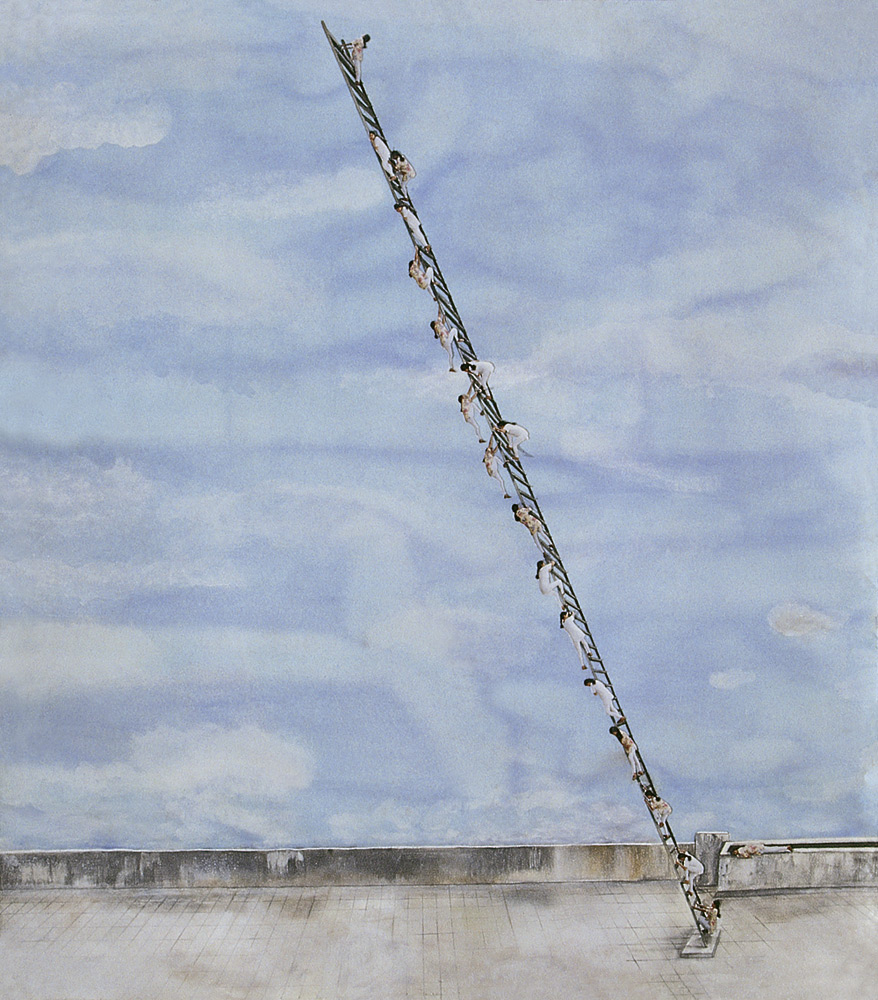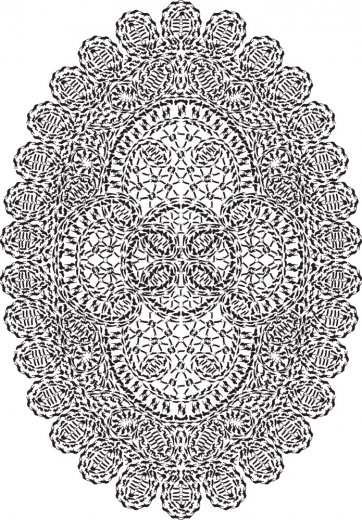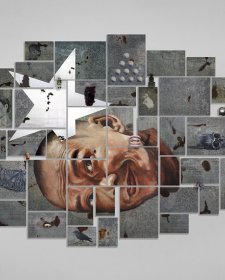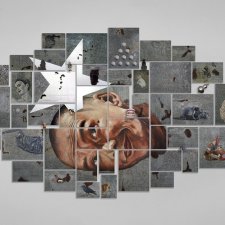Dislocation and nostalgia are reflected in images that are often built through repetition of key motifs. Her own self-image, houses, matchsticks and cockroaches have formed the basis of different projects. Upadhyay’s experiences of migration, and that of her antecedents, have inspired a large body of autobiographical work, including a collaborative crochet project with her mother titled Mum-my. Other works have foregrounded the experiences of communities that dwell in the vast slums of Mumbai, using tropes of popular and advertising culture, such as hoardings, to explore the disjunction between the projected image of a glamorous metropolis and the reality of daily life for millions of poverty-stricken residents. Upadhyay has had major solo exhibitions in the United Kingdom, China, Australia and India. She continues to live and work in Mumbai.
[Un]real Tales of the Dreaming City: Hema Upadhyay
For Hema Upadhyay the interstitial realms of private and public remembrances, the conflicts of the autobiographical and fictional are constructed as visual sociographies that represent notions of nostalgia, history, identity, gender, migration and dislocation. In a self-reflexive urge, she locates her gaze onto the city of Bombay and its hieroglyphics of space, which is both her “home” and her frame of ideological import. Cities, like dreams, are made of desires and fears, their rules are absurd, their perspectives deceitful and everything conceals something else.1 In the public imagination, Bombay is a city of dreams, yet its waking moments are filled with the liminal realisation that the dream of modernity framed as desire, is now seen as urban repression. Interrogating the extremities of the city and the altered notions of freedom and being, Upadhyay positions herself within the ‘observer-participant’ dialectic probing the ‘within’ and ‘without’ of living in such precarious socio-spatial systems. In her interpretation of city life and its atmospheres, commerce and commodities, ambiguity and ambivalence, simultaneous fixity and fluidity, organised and unruly space appear through the lens of the artist’s body/self in a unique feminine aesthetic.
Self-representation, itself a paradoxical and iterative structure, is as much psychological and aesthetic2 ; as the seer and the seen, female self-representations challenge the male norms of contemplation/consumption of the body and the notions of idealised beauty framed by the male gaze. Navigating the realms of the politics/poetics of memory in a surrealist/postmodernist language that combines performance in painting while also amalgamating photography, collaborative and site-specific installations, Upadhyay deploys the body/self as a subject and object in art. The engagement with her own body and its representation has been a gradual process, exploring physical and psychological processes seen through her own eyes. She has maintained a critical distance from overt representations of the feminine self, and in her earlier work, the body emerged as a present absence, via symbolic objects that marked human traces and stories of habitation. As a creative subject who enters into a dialogue with herself as the art object, with the outer world as a space of opposing possibilities and encounters,3 Upadhyay conceals as much as she reveals, resisting narcissistic portrayals and gendered constructions of the female body.
Upadhyay does not paint self portraits, but photographs herself; she is not the central protagonist of her compositions, but appears in multiple miniscule, metaphorical and performative acts. The use of multiples is also a reference from the Mewar miniatures where there is a continuous narrative through a repetition of the same figure within a single painting, akin to a filmstrip. The miniaturization of her body vis-à-vis the urban landscape through photographic cut-outs is an act of subversion, and within it she alternates between the self and other, intimacy and alienation, while generating multiple perspectives of the world in which she lives. Challenging commercial norms of feminine beauty, as endorsed in the media and popular visual culture, her choice of such a portrayal is an act of reclamation; a representation of the ‘Real/Everyday’ body with its frowns, pimples, fat, lethargy and signs of deterioration, in its circumstantial identity, a quest for new equations and significations of feminist subjectivity.
Combining critical enquiry with a sense of irony, pathos and sense of play, Upadhyay articulates surreal sequences in her paintings, stitching together fragments of experiences across historical (her family originally belonged to Pakistan) and real time. Through the interpretive lens of dreams, we see an actual and fictive, imagined and remembered city through the gaze of the artist stretched out on grey clouds in Visitors 1972–1998 2001. Upadhyay was born in 1972 and shifted to Bombay in 1998, and this painting recounts her many visits to Bombay with her mother during this period, exploring the notion of what is considered ‘real’ in city life as seen through the eyes of a tourist. In contrast, her desires and fears, ambitions and struggles in the maximum city are represented in Ladki no. 1 2001, where the ladder almost becomes an architectural sublime thrusting itself into an ethereal blue sky, the terrace being the liminal sign between the body and the city. The life of the migrant and the dislocated body in the urban archipelago is symbolized through the autobiographical lens of the artist, raising existential dilemmas of whom does the city belong to, amidst such explosive demographic shifts.
Pedestrian Size 2010 is a site-specific installation which is comprised of vinyl stickers in the shape of the artist’s own body-shadow in everyday gestures and postures that morph into a decorative carpet on the floor. Upadhyay plays with optical illusions through the creation of a pattern of great beauty used in domestic settings while jerking the spectator into the realization that little human bodies occupy its spaces. She emulates the life of the office-goer in Bombay who struggles within the chaos of the everyday, who jostles, shouts and smiles in the sweat and heat, who gets erased and fragmented in the process of achieving his/her desired dreams in the city. The audience may step onto the carpet/body and then discover the mad play that occurs under the surface of such beauty, articulating the artifice of globalization that always conceals real stories of deprivation/divisive economies and rejects the peripheral. Through the tropes of doubling, concealment and body-shadow, Upadhyay brings together politics and poetics, urging us to understand the darkness of our lived moments, with dreams being part of the phantasmagorias of city life that is intended to disguise its own production.
Amrita Gupta Singh
Program Director, Mohile Parikh Center, Mumbai
1 Steve Pile, Real cities: Modernity, space and the phantasmagorias of city life, London: Routledge, 2005.
2 Danielle Knafo, In her Own Image: Women’s Self Representation in Twentieth Century Art, Madison/Teaneck: Fairleigh Dickinson University Press, 2009
3 Ibid.















